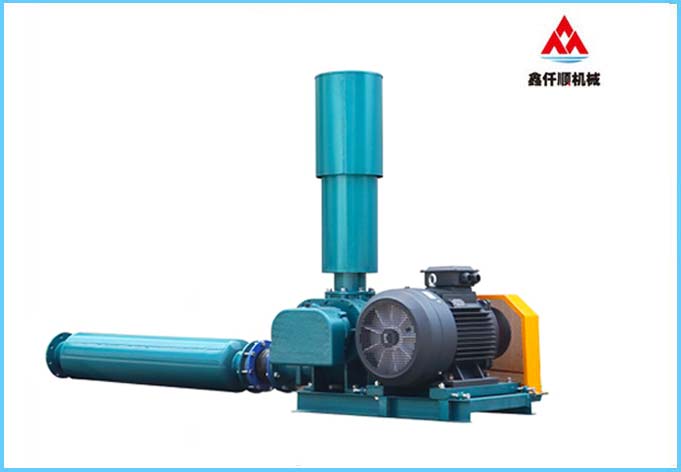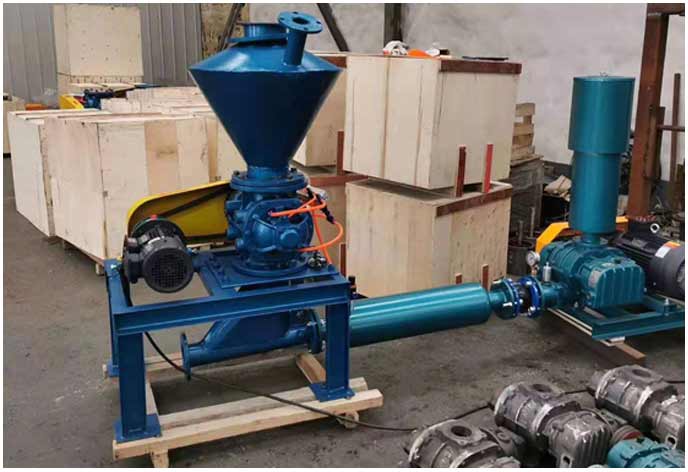Check the journal and shoulder of the bearing installation part on the impeller for wear marks and blueness and blackness on the surface, if any, it means that the bearing runs into the inner race. The worn parts shall be treated according to the wear condition. When the wear amount is ≤ 0.5mm, it can be treated by alloy spraying or pitting on the shaft; When the wear amount is ≥ 0.5mm, repair welding and lathe processing shall be adopted.
Check the surface condition of the impeller. If the surface is bright and there are pockmarks and pull marks, it indicates that there is a collision problem between the fan impellers. When the condition is serious, the impeller will have obvious cracks. At this time, the spare parts should be replaced or repaired in a timely manner.
Check the pitting corrosion on the gear tooth surface and the loose fit between the gear keyway and the key. When the pitting corrosion on the gear tooth surface exceeds 30% - 50% of the overall gear tooth surface, replace the gear; However, the loose fit between the gear keyway and the key will affect the size of the impeller assembly clearance, which will cause the impeller to collide with the fan noise and vibration, so the whole key should be replaced and the clearance should be adjusted.
For newly installed or overhauled blowers, no-load and load commissioning shall be carried out before operation. Generally, no-load operation shall last for 2-4h, and then gradually pressurize them to full load commissioning for more than 8h according to the factory technical requirements. The operation method is as follows.

(1) Preparation and inspection before starting roots blower
① The fluctuation value of power supply voltage is within 380V ± 10%.
② The instrument and electrical equipment are in good condition, and the wiring condition is to be checked. The electrical equipment to be grounded should be reliably grounded.
③ The connecting bolts, base bolts and coupling stud bolts of the joint surfaces between the blower and the pipeline shall be fastened.
④ The lubricating oil in the gear oil tank shall be added to the middle of the oil mark according to the specified brand. The shaft seal device shall be filled with proper amount of lubricating oil through a pressure injection cup.
⑤ Turn the coupling 2~3 turns by hand according to the rotation direction of the blower, and check whether there is friction and collision in the machine.
⑥ The outlet valve of the blower shall be closed, and the bypass valve shall be fully open. The safety valve shall be calibrated.
⑦ Check the belt tightness and adjust it if necessary.
⑧ The air overspeed governor shall be clean and unblocked, and shall be cleaned or replaced if necessary.
Roots blower
(2) No load operation of roots blower
① Start the fan according to the electrical operation sequence.
② During no-load operation, pay attention to the vibration condition of the unit and listen to the rotor for friction and heating.
③ The temperature shall not exceed the specified value.
④ The shaft seal device shall be free of noise and air leakage.
⑤ The lubrication mode of peripheral gear is generally "splash". Through the transparent monitoring window on the oil tank, it should be seen that the mist like oil drops are gathered under the hole cover.
⑥ The no-load current shall be in a stable state, and the meter reading shall be recorded.
(3) Roots blower operates under load
① Open the air outlet valve, close the bypass valve, master the opening and closing speed of the valve, increase the pressure within the rated range, and conduct full load commissioning.
② After the fan is started, it is strictly prohibited to completely close the air outlet duct to avoid bursting.
③ During load operation, check the bypass valve for heating and air leakage.
④ When large and small fans need to be started at the same time, small fans should be started first and then large fans should be started according to the above procedures. When more than one fan is to be started, the other fan shall be started after one fan starts normally.
⑤ Other requirements are the same as no-load operation.
(4) Roots blower shutdown operation
① Record the voltage, current, wind pressure, temperature and other data before shutdown.
② Gradually open the bypass valve, close the outlet valve, and pay attention to the speed of opening and closing the valve.
③ Press the stop button.
(5) Patrol management of Roots blower
① During the operation of the blower, the patrol inspection shall be conducted at least once every 1h, and the meter readings (current, voltage, air pressure, oil temperature, etc.) shall be recorded once every 2h.
② Patrol inspection contents are as follows.
Listen to whether the sound of the blower is normal. There should be no abnormal friction sound and impact sound when the blower is running. If it is abnormal, stop the machine for inspection and troubleshooting.
Check the temperature of all parts of the fan. The temperature of bearings at both ends is not higher than 80C, the temperature of gear lubricating oil is not higher than 60 ° C, the surface around the fan is not hot when touched by hand, and the motor
There shall be no burnt or other odor.
Check the oil level. The oil level shall be within the range of the oil mark, and the splash of lubricating oil observed from the oil window cover shall meet the technical requirements. In case of oil shortage, it shall be added in time, and the air vent on the oil tank shall not be blocked.
Check whether the fan is normal, whether there is air leakage everywhere, whether the vibration of each operating part is too large, and whether the electrical equipment is loose due to heating.
(6) Emergency shutdown of roots blower
In case of the following conditions, stop immediately to avoid equipment accidents.
① When the fan blade collides or the rotor moves radially and axially and rubs against the casing, causing heat and smoke.
② When the oil temperature of bearing and gearbox exceeds the specified value.
③ When the engine body vibrates strongly.
④ When the shaft seal device bulge is broken and there is a large amount of air leakage.
⑤ When the current and wind pressure rise suddenly.
⑥ When the motor and electrical equipment are hot and smoke, Worcester Environmental Protection professional sewage treatment aeration equipment, Roots blower, rotary blower, centrifugal fan, etc.










